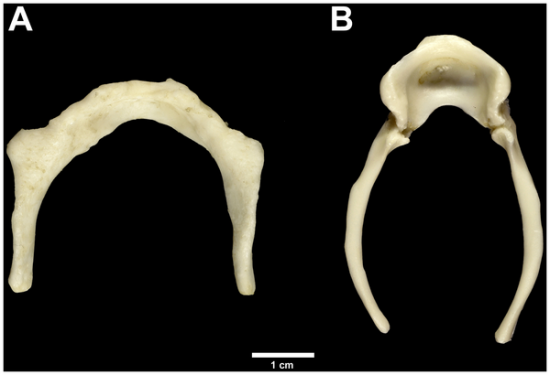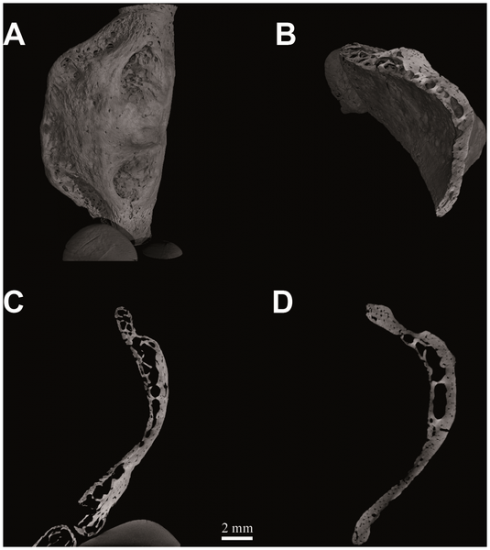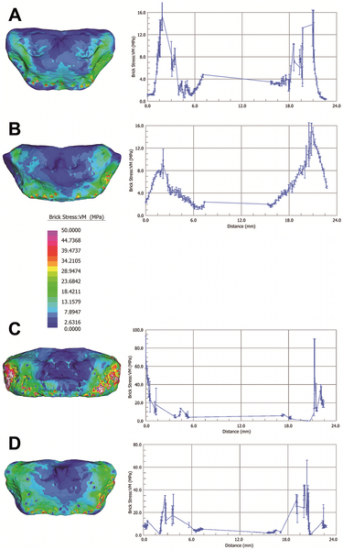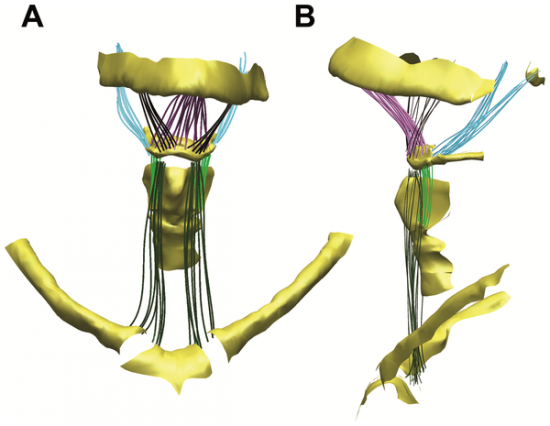Ruggero D’Anastasio, Stephen Wroe, Claudio Tuniz, Lucia Mancini, Deneb T. Cesana, Diego Dreossi, Mayoorendra Ravichandiran, Marie Attard, William C. H. Parr, Anne Agur, Luigi Capasso
Source - http://www.plosone.org/article/info%3Adoi%2F10.1371%2Fjournal.pone.0082261
Abstract
The description of a Neanderthal hyoid from Kebara Cave (Israel) in 1989 fuelled scientific debate on the evolution of speech and complex language. Gross anatomy of the Kebara 2 hyoid differs little from that of modern humans. However, whether Homo neanderthalensis could use speech or complex language remains controversial. Similarity in overall shape does not necessarily demonstrate that the Kebara 2 hyoid was used in the same way as that of Homo sapiens. The mechanical performance of whole bones is partly controlled by internal trabecular geometries, regulated by bone-remodelling in response to the forces applied. Here we show that the Neanderthal and modern human hyoids also present very similar internal architectures and micro-biomechanical behaviours. Our study incorporates detailed analysis of histology, meticulous reconstruction of musculature, and computational biomechanical analysis with models incorporating internal micro-geometry. Because internal architecture reflects the loadings to which a bone is routinely subjected, our findings are consistent with a capacity for speech in the Neanderthals.

Figure 1. Male Homo sapiens and Pan troglodytes hyoid bones.

Figure 2. Figure 2. Computed tomography of Homo neanderthalensis (Kebara 2, Tel Aviv University - Israel).
Hyoid body volume rendering (V = 80 kV, I = 100 µA; pixel size: 10.0 µm; exposure time: 3.0 sec.; 2400 projections over 360 degrees) (a); spongy bone structure (b); histological architecture: medial sagittal section (c) and medial transverse section (d). doi:10.1371/journal.pone.0082261.g002

Figure 4. Computational biomechanical analyses of hyoid models.
Homo neanderthalensis (Kebara 2) (A), Homo sapiens (SAT37) (B), Homo sapiens (OP1T37) (C), and Homo sapiens (SAT41) (D). Surface von Mises stress distributions in visual plots for each model are given for each model on the left. On the right a two dimensional graph, generated using the Graph Tool (Vs Position) in Strand7 (2.4), is provided. This gives von Mises stress for internal elements intersecting a straight line drawn between nodes at maximum lateral width of each hyoid body, i.e., between the lateral most extremes where the body would have connected with the hyoid’s greater cornua (greater horns). Values are interpolated across element edges intersected by the line. MPa = megapascals. doi:10.1371/journal.pone.0082261.g004

Figure 6. 3D reconstruction of hyoid musculature to the level of fiber bundles.
Muscles of the human hyoid used to determine forces and vectors applied in Finite Element Analyses reconstructed in 3D. Frontal view (a) and lateral view (b). Geniohyoid (purple); Mylohyoid (black); Stylohyoid (blue); Sternohyoid (green). doi:10.1371/journal.pone.0082261.g006